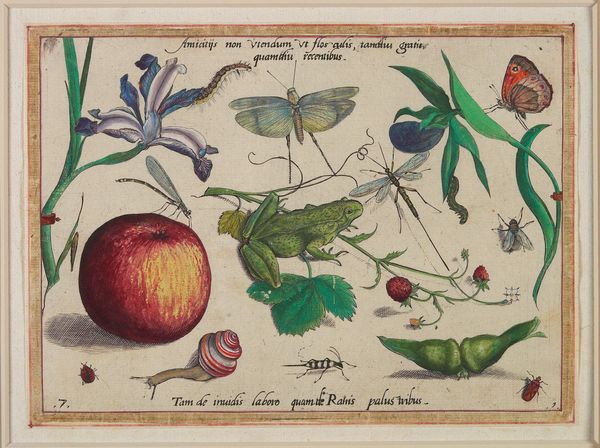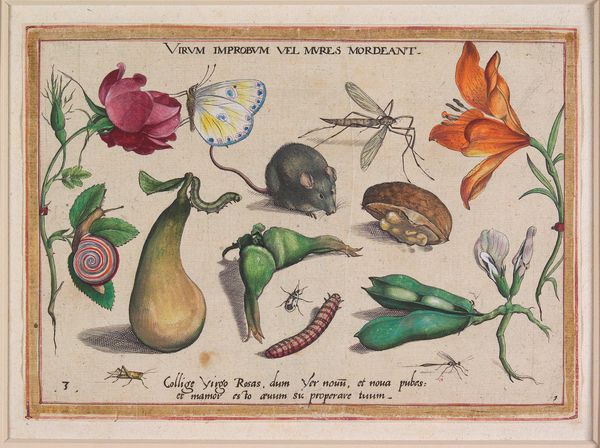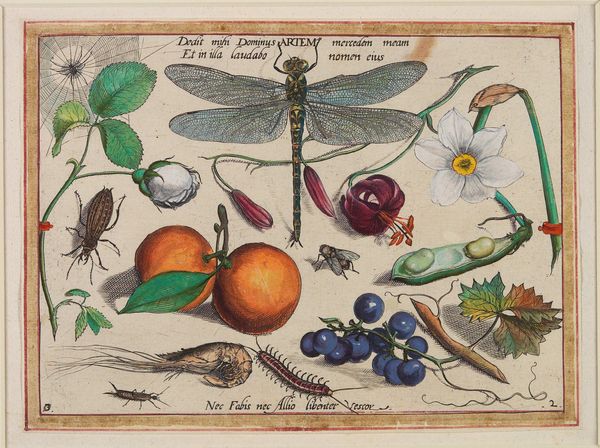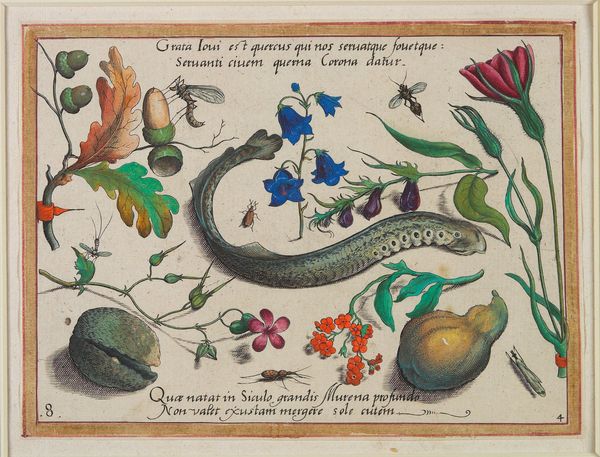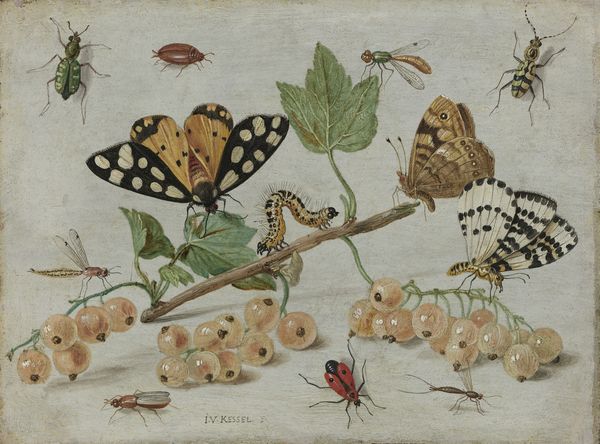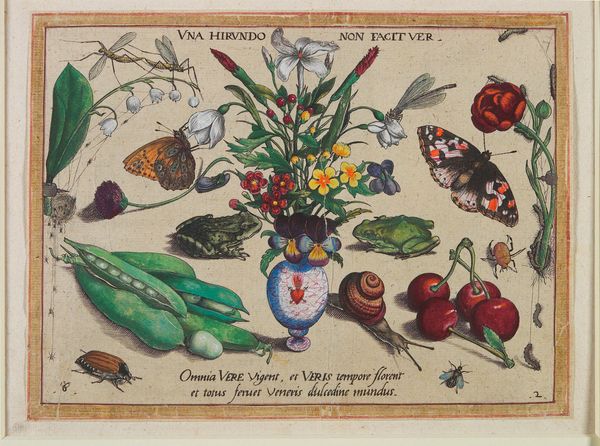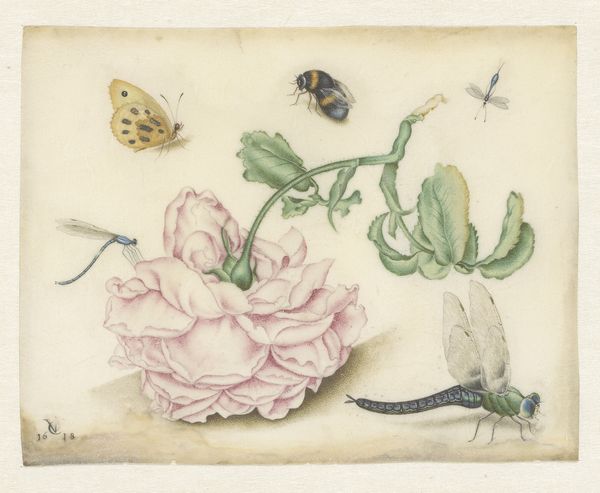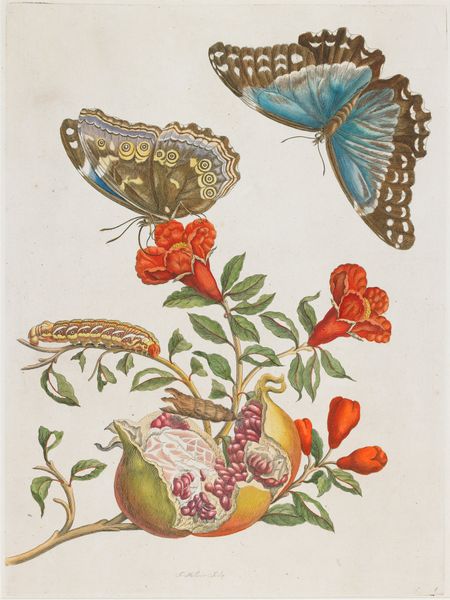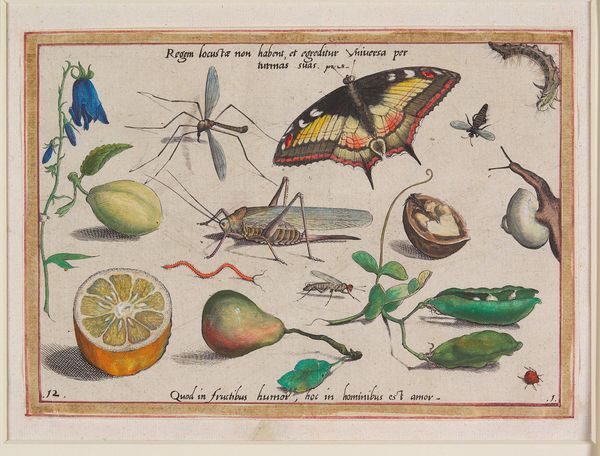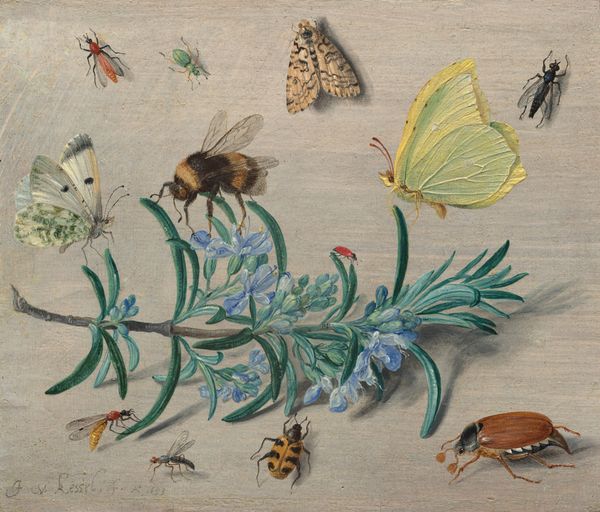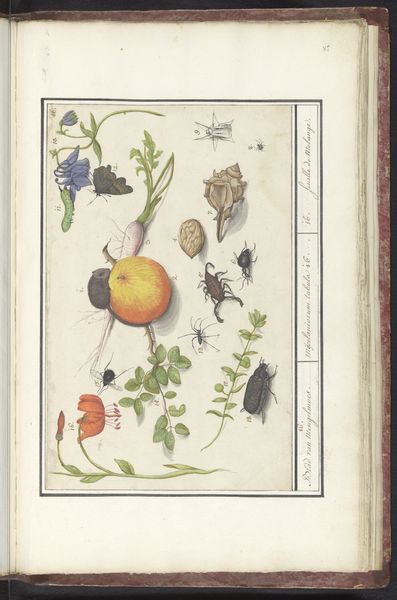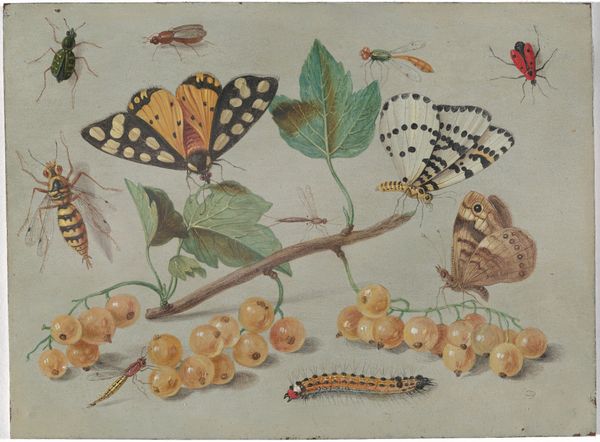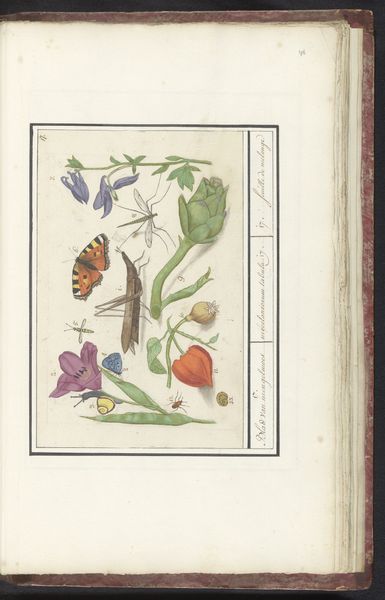
drawing, coloured-pencil, print
#
drawing
#
coloured-pencil
# print
#
11_renaissance
#
coloured pencil
#
watercolour illustration
#
northern-renaissance
Dimensions: 6 1/4 x 8 1/2 in. (15.88 x 21.59 cm) (plate)
Copyright: Public Domain
Editor: This is Jacob Hoefnagel’s "Per tal variare Natura e bella," created in 1592. It's a print and drawing made with colored pencil. It's such a vibrant collection of flora and fauna, like a snapshot of a Renaissance garden. What strikes you most about this piece? Curator: I think Hoefnagel’s work really speaks to the Renaissance fascination with the natural world, but through a lens shaped by the era’s burgeoning print culture. This wasn't just scientific observation; it was about categorization, about possessing knowledge, visually and intellectually. Notice the Latin inscriptions - what do you think those add to the artwork's effect? Editor: It's interesting. I noticed the Latin right away. They add an air of scientific authority but also make it seem like it's aimed at an educated audience, more about displaying knowledge than actually understanding it. It feels like the beginning of something, like the precursor to field guides and nature documentaries. Curator: Precisely! These prints were often included in books, circulated among elite circles. They served a function - to classify and order the natural world – while reinforcing a social hierarchy of knowledge. The insects, plants, even the nuts—they become symbols within a social and intellectual framework. Who do you imagine was viewing this piece? Editor: Definitely someone with access to books and education, someone probably wealthy. Seeing it as part of that exclusive circle makes me think about how access to knowledge shaped power dynamics then. The beauty and seeming objectivity are only part of the story. Curator: Exactly. Hoefnagel's work is a reminder that art and science are never truly neutral; they are always products of their time, embedded in specific social contexts and power structures. Editor: I'll never look at a pretty nature drawing the same way again. It really shows how intertwined art is with the culture and social aspects of the time. Curator: And how important it is to examine art's role within that bigger picture.
Comments
No comments
Be the first to comment and join the conversation on the ultimate creative platform.
